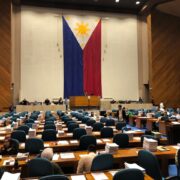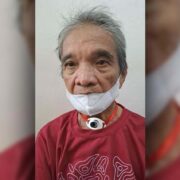Philippine insurgent records

One of the largely untapped sources in the National Library of the Philippines is a mass of documents once known as the “Philippine Insurgent Records” returned to the Philippines by the United States National Archives and Records Administration (Nara) in 1957. Some materials have deteriorated, others were stolen, others misfiled making them inaccessible. Fortunately, Nara reproduced what I hope is everything in 643 rolls of microfilm and catalogue.
The first person to go over these was Captain John R. M. Taylor who began work in Manila in 1899 on orders from General Otis “to select and translate [what could] inform the War Department, and through it, the Senate, of the real character and purposes of the movement against the US. After Taylor returned to the US in 1901, he was assigned to continue work on the papers shipped from Manila to the Bureau of Insular Affairs (BIA) in 1902. Taylor described the archive as: “a large number of documents captured from the insurgents in the Philippines.” These documents cover the period 1896 to 1901, and they form the data upon which any statement of the methods employed during the insurrection against the authority of the US must be based.
“These documents were found in many different parts of the Archipelago … the papers which now have a historical value had then a military one. They are chiefly in Spanish; a very considerable portion, however, is in Tagalog, and there are documents in other Philippine and Eastern languages … these papers form a heterogenous collection covering many different sides of native life … the greater portion of them is of no interest, being merely personal or routine correspondence, or routine papers of municipalities.
“… When these papers were delivered to the BIA, they weighed, boxed, some three tons. The papers composing this mass range in size from mere torn scraps of paper containing memoranda to large volumes containing records of letters sent and received. Many of these documents had originally been filed according to some system, but with these systems, it would have been impossible to reconstruct. To arrange them for reference has been like reconstructing a library from the fragments of books which have escaped a fire.”
Taylor arranged the documents chiefly into two categories: those “of interest” and those without. The latter were “placed in 428 bundles and indexed by bundles, each of which contains papers relating to some general subject. In these are some 121,096 documents.” Of course, what did not interest Taylor, could interest someone else. For example, I came across a large leather envelope on which Taylor pasted this note, “Love letters of Gen. Gregorio del Pilar. No interest here.” This should inspire younger historians to survey the material Taylor consigned to the pile that had, in his opinion, neither military nor historical value. Documents he considered important were filed in:
“… 2,034 folders, containing in all about 12,204 documents. The more important of these have been translated and the translations attached. There are further 129 volumes, almost all in manuscript, which comprise letter-sent and received books, records of proceedings of various bodies, and books of the treasury. These have been indexed … by a card system which enables ready reference to any document or class of documents … They are stored in a small room where there is only space for the clerks employed in working at them, and many of them, written on poor paper, which has rapidly deteriorated, will not stand much handling without breaking. These documents are accordingly not at present accessible to anyone except those in charge of them.”
Papers were arranged, filed, and stamped with a property mark. Furthermore, handwritten notes were made to papers and enclosures to make retrieval easier because Taylor offered to write what has come down to us as the five-volume “The Philippine Insurrection against the United States: A Compilation of Documents with Notes and Introduction.” The original material on these were filed in 1,306 folders. If printed, his notes alone would have covered over a thousand pages. Taylor had the manuscript prepared by 1906, but publication was withheld by William Howard Taft both when he was Secretary of War and also as US President. Taylor was returned to his regiment, the BIA Insurgent Records Division disbanded, and the documents placed in storage.
Over the years, there were a number of requests for repatriation. In 1916 T.M. Kalaw, director of the Philippine Library and Museum, made a request for the return of the “Insurgent Records” to Manila following debates on Philippine autonomy in the US Congress. In response to a 1923 request, BIA asked for a representative sent to the US to select documents of historical value that would be provided in photostat to Manila. 1941 and 1956 requests resulted in the US Congress passing a bill to enable repatriation in 1957. Now, the papers languish in the National Library waiting for researchers to unlock its secrets.
—————-
Comments are welcome at aocampo@ateneo.edu
Ambeth is a Public Historian whose research covers 19th century Philippines: its art, culture, and the people who figure in the birth of the nation. Professor and former Chair, Department of History, Ateneo de Manila University, he writes a widely-read editorial page column for the Philippine Daily Inquirer, and has published over 30 books—the most recent being: Martial Law: Looking Back 15 (Anvil, 2021) and Yaman: History and Heritage in Philippine Money (Bangko Sentral ng Pilipinas, 2021).


















